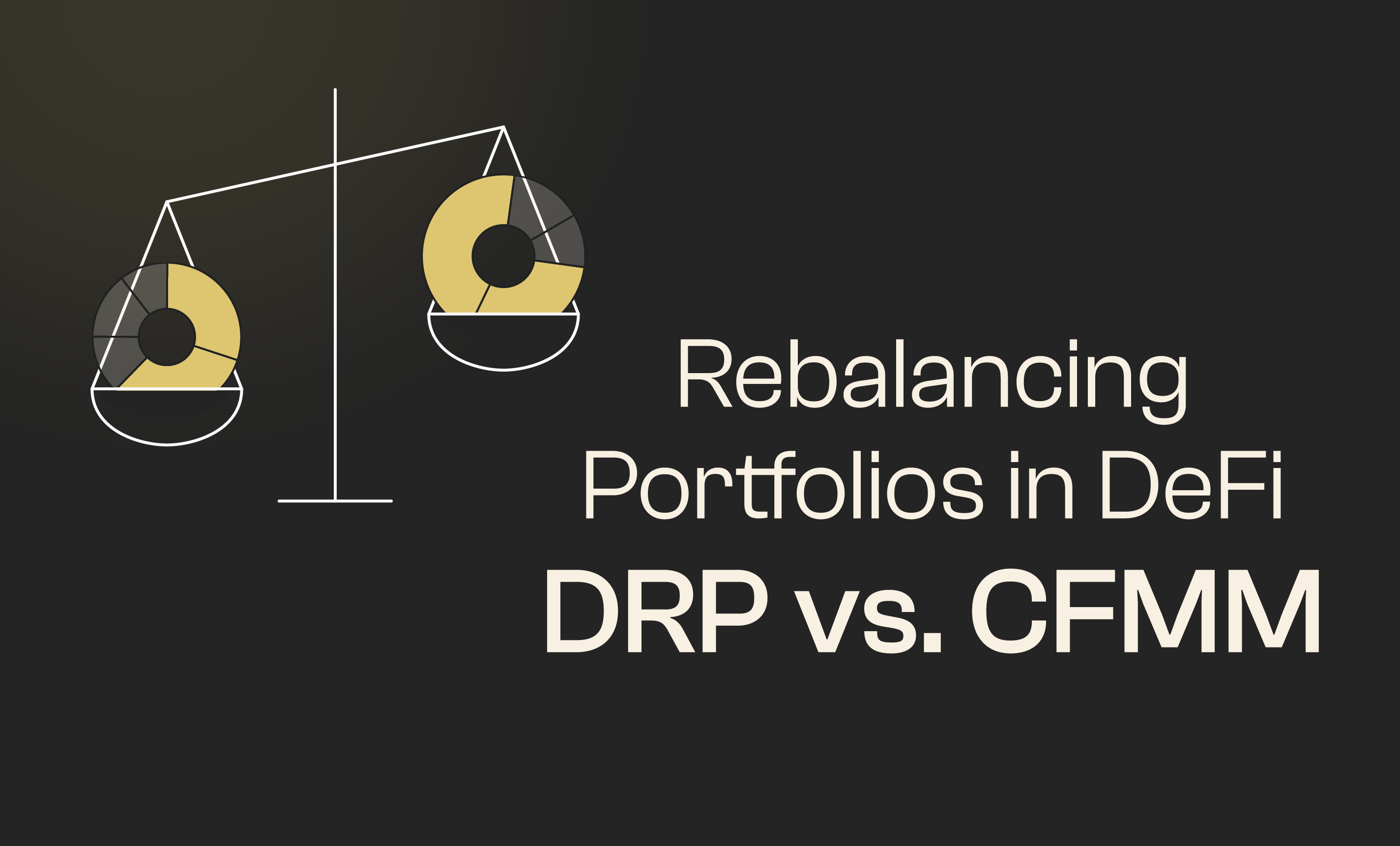Rebalancing Portfolios in DeFi: DRP vs. CFMM
A rebalancing portfolio can dramatically outperform HODLing a static portfolio of assets as well as staking ETH as a validator.

Finance 101 teaches that the optimal exposure to an asset class is a rebalancing portfolio. That’s because it offers exposure to assets (beta) while generating profit (alpha) by systematically buying low and selling high. Most people are already familiar with this in the form of the classic 60/40 portfolio for stocks/bonds or for commodities. It turns out that a rebalancing portfolio can dramatically outperform HODLing a static portfolio of assets as well as staking ETH as a validator.
Rebalancing Basics
In its simplest form, rebalancing takes into account five variables to enhance returns by harnessing volatility.
When plugged into a rebalancing formula those variables interact neatly.
Run your own analysis if you want to see how the fundamentals interact. Visit Clipper’s Docs and our post on volatility harvesting to see our analysis showing that crypto blue-chips exhibit the characteristics required for a rebalancing strategy.
Rebalancing in DeFi
DEX Liquidity Pools are attractive places to park capital because they promise just such a rebalancing portfolio, where the transaction costs of rebalancing are paid by traders rather than the LPs. For example, Uniswap’s largest pool is its ETH<>USD, which always maintains a 50/50 ratio of the value of the assets.
But all is not what it seems. Today, there are three types of DEX liquidity pools, all of which maintain a constant ratio in the value of their assets. The first is the Constant Function Market-Maker (“CFMM” aka Constant Product Market-Maker aka CPMM), pioneered by Uniswap and used by its many forks and derivatives. The second is the Proactive Market-Maker (“PMM”), pioneered by Dodo Exchange. The third is the Formula Market Maker (“FMM”), pioneered by Clipper. But each design determines the prices at which they rebalance in different ways, and this difference matters because the Nobel Prize-winning research behind Finance 101 only applies if rebalancing happens at market prices. If the rebalancing process uses bad prices, the portfolio will lose more than it could ever gain from harvesting volatility. Here’s how each design rebalances.
The CFMM Rebalancing Process
CFMMs adjust their prices in response to each trade according to a predetermined function (hence the name). This design relies on arbitrageurs to keep prices in line with the market. Unfortunately, this also means that the prices at which CFMMs rebalance are always slightly behind, thus slightly worse than, the market.
The PMM Rebalancing Process
The PMM incorporates price feeds from on-chain oracles like Chainlink. Each time the oracle updates, the PMM resets its price to the oracle. In between oracle updates, PMMs adjust prices in response to trades using a CFMM. Unfortunately, on-chain oracles are constrained by the block time and the cost of the blockchain. In the case of Ethereum, the block time is several minutes, whereas arbitrageurs are lightning-fast. Oracles also have big margins of error. For example, Chainlink’s ETH/USD oracle only updates once every hour or 0.5% move in ETH. That means the prices at which a PMM rebalances are still always slightly behind and slightly worse than the market.
The FMM Rebalancing Process
The FMM incorporates price feeds from off-chain oracles like Coinbase, which update multiple times per second (just as fast as arbitrageurs), by introducing a hybrid on-chain/off-chain architecture. Traders request a price quote from Clipper’s servers, administered by its DAO, which authorizes them to trade with the pool. The pool may then check the validity of the price against slower on-chain oracles like Chainlink and verifies the market-making formula has been applied correctly on-chain. This means the prices at which an FMM rebalances are actual real-time market prices, matching the market.
These Differences Drive Returns
Comparing these DEXs empirically has always been a difficult proposition. To do so, A16Z introduced the concept of Loss Versus Rebalancing (“LVR”). The data show that the CFMM and the PMM indeed do not offer the benefits of a classical Finance 101 rebalancing portfolio. This is perhaps obvious from the name a16z chose for its metric; it assumes there must be ‘loss’. If CFMMs or PMMs could come close to the benchmark, they would have named it differently – perhaps “performance” versus rebalancing.
The FMM was introduced after a16z introduced LVR. The data show that the FMM can not only meet the rebalancing benchmark but exceed it by adding an additional spread. See Clipper’s Benchmarking page to see Clipper FMM’s real-time performance versus rebalancing.

